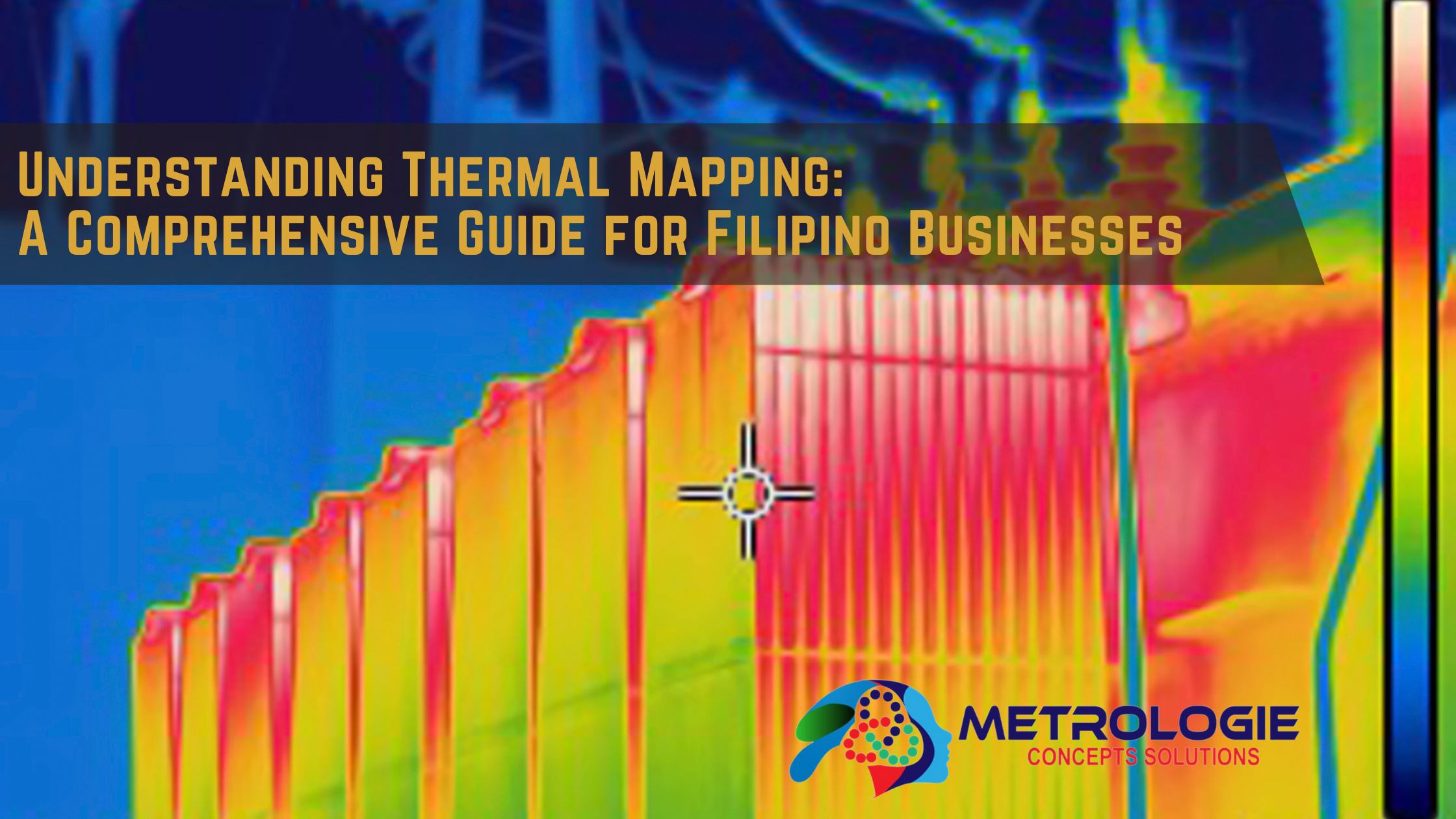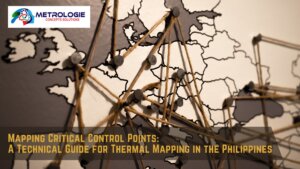Learn everything about understanding thermal mapping in this comprehensive guide tailored for Filipino businesses. Explore its importance, benefits, and implementation strategies to optimize your operations effectively.
Thermal mapping has emerged as a crucial tool for businesses across various industries, offering insights into temperature distribution, heat transfer, and energy efficiency. In the dynamic landscape of Filipino businesses, understanding thermal mapping is essential for optimizing operations, ensuring product quality, and complying with regulatory standards. This comprehensive guide delves into the fundamentals of thermal mapping and explores its applications, benefits, implementation strategies, and future trends for Filipino businesses.
Introduction:
In the dynamic landscape of Filipino businesses, optimizing operational efficiency is paramount for sustainable growth and success. Understanding thermal mapping plays a pivotal role in this endeavor, offering insights into temperature variations within a given space. This comprehensive guide is crafted to illuminate Filipino businesses on the significance, methodologies, and advantages of thermal mapping, empowering them to make informed decisions to enhance their operations.
The Essence of Thermal Mapping
Thermal mapping stands as a cornerstone in modern business operations, providing a detailed analysis of temperature differentials within a defined environment. From warehouses to manufacturing facilities, understanding thermal dynamics aids in maintaining product integrity, ensuring regulatory compliance, and optimizing energy utilization.
Definition and Importance
Thermal mapping, also known as temperature mapping or thermal profiling, involves the systematic monitoring and analysis of temperature variations within a defined space or system. It provides valuable data on heat distribution, thermal gradients, and environmental conditions, enabling businesses to identify potential issues, optimize processes, and enhance product quality.
Application in Various Industries
Thermal mapping finds applications across diverse sectors, including pharmaceuticals, food and beverage, logistics, manufacturing, and healthcare. In pharmaceuticals, for example, it is used to ensure the stability of drugs during storage and transportation. In food and beverage, it helps maintain the quality and safety of perishable products. Similarly, in logistics, thermal mapping ensures the integrity of temperature-sensitive goods during transit.
The Science Behind Thermal Mapping
Understanding Heat Transfer
At its core, thermal mapping relies on the principles of heat transfer, including conduction, convection, and radiation. Heat moves from regions of higher temperature to lower temperature, affecting the thermal equilibrium within a system. By monitoring temperature changes over time, businesses can gain insights into heat transfer mechanisms and optimize their processes accordingly.
Tools and Techniques Used in Thermal Mapping
Thermal mapping utilizes a variety of tools and techniques, including data loggers, thermal imaging cameras, thermocouples, and wireless sensors. These instruments enable real-time monitoring of temperature conditions in warehouses, cold storage facilities, transportation vehicles, and manufacturing environments. Advanced software systems facilitate data analysis, visualization, and reporting, empowering businesses to make informed decisions based on actionable insights.
.
Benefits of Thermal Mapping for Businesses
Improving Operational Efficiency
By identifying hotspots, thermal differentials, and inefficiencies in heating or cooling systems, thermal mapping helps businesses optimize energy usage, reduce operational costs, and improve overall efficiency. It enables proactive maintenance, prevents equipment failures, and enhances the reliability of critical processes.
Ensuring Product Quality and Safety
In industries where temperature control is paramount, such as pharmaceuticals and food production, thermal mapping plays a crucial role in ensuring product quality, integrity, and safety. By monitoring temperature variations during storage, transportation, and processing, businesses can mitigate risks of spoilage, contamination, and product degradation.
Reducing Energy Consumption
Thermal mapping allows businesses to pinpoint areas of energy loss, identify insulation deficiencies, and optimize HVAC systems for maximum efficiency. By implementing targeted improvements based on thermal mapping data, companies can reduce energy consumption, lower carbon emissions, and enhance sustainability practices.
Importance of Thermal Mapping for Filipino Businesses
In the tropical climate of the Philippines, where ambient temperatures fluctuate significantly, thermal mapping assumes even greater importance. Filipino businesses across various sectors, including pharmaceuticals, food storage, and logistics, rely on accurate temperature control to preserve product quality and safety.
Key Components of Thermal Mapping
Data Acquisition Systems (DAS)
Data acquisition systems are instrumental in capturing temperature data across designated points within a facility. These systems utilize sensors and probes to collect real-time temperature readings, providing invaluable insights into thermal gradients.
Analysis and Interpretation
Once data is gathered, meticulous analysis and interpretation are conducted to identify temperature patterns, anomalies, and potential areas of concern. Advanced algorithms and software assist in visualizing data trends and generating actionable reports.
Regulatory Compliance
Compliance with industry regulations and standards is a critical aspect of thermal mapping. Filipino businesses must adhere to guidelines set forth by regulatory bodies to ensure product safety and integrity, avoiding costly penalties and reputational damage.
Implementation Strategies for Thermal Mapping
Strategic Sensor Placement
Effective thermal mapping hinges on strategic sensor placement to capture representative temperature data. Understanding the layout and dynamics of the facility aids in optimizing sensor positioning for comprehensive coverage.
Continuous Monitoring and Maintenance
Thermal mapping is not a one-time endeavor but a continuous process necessitating regular monitoring and maintenance. Proactive measures, such as sensor calibration and system checks, uphold the accuracy and reliability of temperature data.
Integration with Quality Management Systems (QMS)
Integration of thermal mapping data with existing quality management systems streamlines regulatory compliance and enhances operational efficiency. Automated alerts and notifications enable timely interventions, mitigating potential risks to product quality.
Choosing the Right Thermal Mapping Solution
Factors to Consider
When selecting a thermal mapping solution, Filipino businesses should consider factors such as scalability, accuracy, reliability, ease of use, and cost-effectiveness. Customized solutions tailored to specific industry requirements and operational needs are preferable to off-the-shelf options.
Comparison of Different Technologies
Thermal mapping solutions vary in terms of technology, features, and capabilities. Comparative analysis of different technologies, including data loggers, thermal imaging cameras, and wireless sensors, can help businesses make informed decisions based on their unique requirements and objectives.
Best Practices for Thermal Mapping
Planning and Execution
Effective thermal mapping requires careful planning, meticulous execution, and adherence to standardized protocols. Businesses should define mapping objectives, select representative test locations, establish measurement intervals, and document procedures to ensure consistency and accuracy.
Data Analysis and Interpretation
Once thermal mapping data is collected, it must be analyzed and interpreted to extract meaningful insights. Statistical analysis, trend identification, and anomaly detection techniques enable businesses to identify patterns, deviations, and areas for improvement, driving continuous optimization and quality enhancement.
Future Trends in Thermal Mapping
Emerging Technologies
Advancements in sensor technology, wireless communication, and data analytics are driving innovation in thermal mapping solutions. Emerging technologies such as Internet of Things (IoT) sensors, cloud-based platforms, and artificial intelligence promise to revolutionize thermal mapping practices, enabling real-time monitoring, predictive analytics, and autonomous decision-making.
Potential Applications in Filipino Industries
In the context of Filipino industries, the future of thermal mapping holds immense potential for innovation, efficiency gains, and competitive advantage. From optimizing cold chain logistics to ensuring compliance with stringent regulatory requirements, thermal mapping will continue to play a critical role in shaping the future of Filipino businesses.
FAQs (Frequently Asked Questions)
How often should thermal mapping be conducted? Thermal mapping should be conducted initially upon facility setup and subsequently at regular intervals as per industry regulations or internal quality protocols.
What are the consequences of inadequate thermal mapping? Inadequate thermal mapping can lead to compromised product quality, regulatory non-compliance, and increased operational costs due to energy inefficiencies.
Is thermal mapping applicable to all industries? While thermal mapping is predominantly utilized in sectors with temperature-sensitive products, its principles can be adapted to various industries where temperature control is critical.
Can thermal mapping help reduce energy consumption? Yes, by identifying temperature variations and optimizing HVAC systems, thermal mapping contributes to energy conservation and cost savings.
What role does humidity play in thermal mapping? Humidity levels impact thermal dynamics and must be considered alongside temperature variations for comprehensive mapping and control.
How can Filipino businesses leverage thermal mapping for competitive advantage? Filipino businesses can leverage thermal mapping to enhance product quality, streamline operations, and gain a competitive edge in the market by ensuring compliance with international standards.
Conclusion:
In conclusion, understanding thermal mapping is indispensable for Filipino businesses striving for operational excellence and regulatory compliance. By embracing the principles outlined in this comprehensive guide, businesses can harness the power of thermal mapping to optimize processes, safeguard product integrity, and achieve sustainable growth in the dynamic business landscape of the Philippines.




